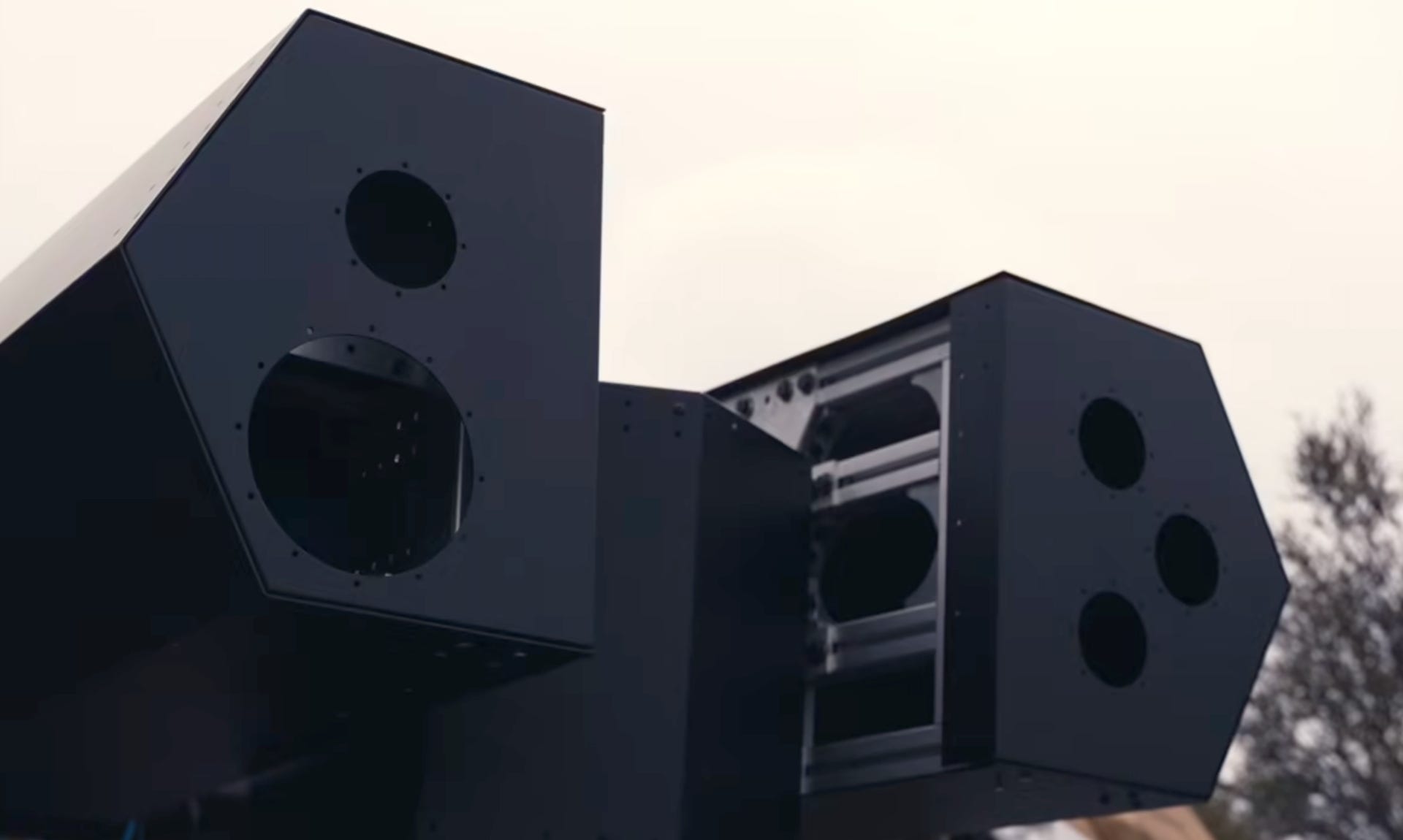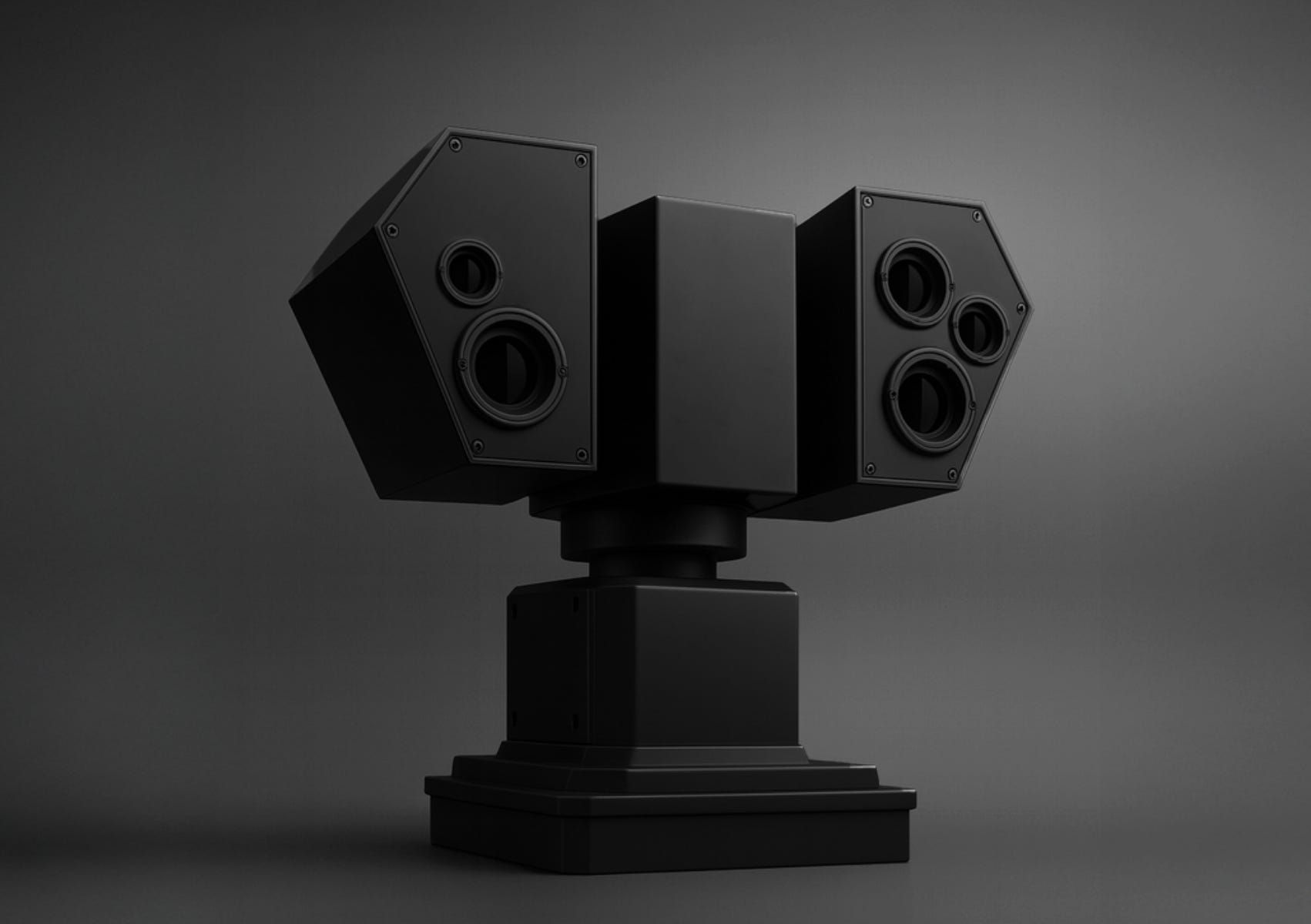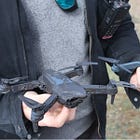The Startup Building the 'AK-47' of Laser Weapons
Aurelius Systems CEO Michael LaFramboise talks reliable and mass-producible directed energy weapons (and the Death Star).
Welcome to Laser Focus, an occasional interview series with subject matter experts in the directed energy space.
Michael LaFramboise is the co-founder and CEO of Aurelius Systems, a San Francisco-based startup focused on developing an autonomous high-energy laser turret for counter-drone defense. The company’s first product, the Archimedes Laser Defense System, combines advanced sensors, AI-guided tracking, and a high-power directed energy system into a compact platform that can purportedly neutralize drones for a fraction of the cost of traditional systems.
This interview has been edited for length and clarity.
LASER WARS: How did you end up in the laser weapon game?
MICHAEL LAFRAMBOISE: I worked in R&D and sales at Coherent Corp, the big US-based multinational optics prime, for several years. We had worked a little bit in directed energy and some of the programs, and I would sell subcomponents — fiber, diodes, assemblies, stuff like that — in the defense area. So I’ve been tuned on just from being in that space.
It’s also sick, so it’s just cool. That’s my original interest.
Was there anything from your experience at Coherent that shaped your approach to laser weapons at Aurelius?
From the laser company point of view, you want to sell at volume. It’s not too conducive to your business to sell one or two units per year into a very highly bespoke product — you’re doing that with the hope that things go high volume, but they haven’t really done so to date. So what would work are more mass produced, edge-deployed, distributed series of systems. Obviously that’s more conducive from the optic supplier point of view to your core business. So where Lockheed and Northrop Grumman might really be interested in selling one, two, three, four, maybe low 10s of numbers of highly bespoke, $100 million units, the more mass produced system will work just as well.
How are things going at Aurelius?
We were just invited to participate in the US Army’s Defense in Depth Experiment (DiDEX) 25, which is a demonstration with the 1st Cavalry Division in Texas. We’ll be demonstrating new upgrades to our system, a series of new operational parameters I can’t talk about too much, but there’ll be some news coming out about that soon.
Beyond that, a lot of it has been hiring. We announced our $10 million seed raise last month, and we just hired one of Anduril’s directors to run our growth team. It’s all about hiring that new team that’s going to take us to the next level, expanding operations into multiple states, things like that.
What can you tell me about Archimedes right now? What distances are you hitting and at what power?
I’m going to hold off on that. I would say that we’re essentially taking orders right now for our first distribution of units. I can’t talk about the timeline, but we’re planning out production: how do you go to a more skilled production unit? How do you evolve from doing more pure R&D into the first production runs of our system, which there aren’t going to be 1,000s of just yet? We’re currently expanding facilities: we have a small facility in Detroit now, and we’ll continue to expand there, because you probably don’t want to go to production in San Francisco. You want to do it in a place more like Detroit.
Zooming out: What are people getting wrong about directed energy today?
We’ve been in contact with a lot of labs and research organizations and companies that have done directed energy for many decades, and people know where skeletons are hidden. You should work with them, hire them if you can; we’ve hired some really good people away from research labs.
But I think what’s really clear is that the way that directed energy has been done in the past, every single subsystem development decision has been made from the point of view of the military research lab PhD. Don’t get me wrong, they are ultra smart, but every single subsystem decision has been made from the point of view of, “I’m going to make the most bespoke thing that is 99.999% effective” when, in reality, you do something that’s 80% effective or 80% as accurate and your cost and time to deployment and everything is like 1% or lower. You have 1/100th of the time to deployment if you just drop effectiveness slightly, you have 1/100th to 1/1000th of the cost if you just pull components from, say, automotive instead of from defense.
To be clear, I don’t mean 80% effective in terms of, “it gets a kill 80% of the time.” I mean it from a technical point of view: if I save 99% of cost-to-buy making a system with the power density I need for a three-second kill at 1.3 kilometers instead of a four-seconds at 1.5 kilometers, that’s a really good tradeoff for the system actually being deployable, because the alternative is that it doesn’t go out, or the thing explodes all the time or just breaks. I’m not going to get into it, but we have an extreme benchmark for kill parameters — rapidity of kills and target movement and fire control tracking — that is much greater of a requirement that we’ve imposed on ourselves internally than anything the US Army, US Navy, or US Air Force has given us.
Our attitude is that we’re not competing with Lockheed on the crazy 100 kilowatt or 300 kilowatt systems that are designed to shoot down planes from 10 miles away, where you need coherent beam combiners and you’re stretching fiber and measuring output and everything. What we’re doing is thinking about, “what is the AK-47 version of this?” Where it works, is mass-producible, and does not break? This is how laser weapons actually get deployed in the 1,000s across the US Defense Department and US Department of Homeland Security and civilian partners.
What’s your five-year plan?
Five years from now, we want to have deployed Archimedes, our first product, en masse, and be at the initial deployment stages of our second and third products and be expanding our product lines. Eventually, we want to go upscale: we want to counter hypersonic missiles, counter Group 3 and 4 drones, larger systems, rockets, mortars, things like that. We’ll start to get into those higher-kilowatt systems that are deployed at further distances.
But eventually — and I’ve talked about this before — we want to make something like the Death Star, where we become a trillion-dollar company by having orbital weapons platforms that provide an almost instantaneous speed-of-light effect on targets in a low Earth orbit all the way to the trans-lunar and trans-Martian regimes.
Right now, our marginal cost to shoot down FPV drones and Group 2s is 10 million times better than state-of-the-art systems, but in orbit it’s probably a billion times better, maybe 10 billion times better. Say you’re asking, “how do I destroy satellites in orbit, what kind of missile do I use?” It’s probably not a $2 million missile; it’s probably a $50 million missile. So to prepare for an engagement where you need to take down a Russian satellite, are you really going to spend $50 million to do it at scale? Maybe there’s 10,000, 20,000, or 30,000 Russian satellites in orbit? If you’re using directed energy, like a laser, which is very directional, you can easily get on the right system from 10s to hundreds of kilometers away and shoot it down, especially with no atmosphere to go through.
It’s like the marginal cost to shoot down the drones that we’re looking at on Earth with the Archimedes, but on steroids because the numbers just explode when you talk about space systems. If you need to have a deterrent to make sure that the goal is not to go to war, the goal is to be so overwhelmingly powerful that there’s no necessitation of engagement.
The Pentagon’s fiscal year 2026 budget request includes R&D funding for the Joint Laser Weapons System for cruise missile defense as part of the Golden Dome for America. What unique challenges come to mind when you’re looking to scale up your systems?
We have high level ideas about it, and it’s definitely in our roadmap. What we’re really focusing on right now is our edge-deployed counter-drone solution, and getting that to market as soon as possible. When that deploys, will have a great high-margin business line that makes us a billion-dollar company already. From there, we could raise the capital and have the support and technology development internally to go and compete with Lockheed Martin and Northrop Grumman and some of these subcomponent suppliers on the development of those 100, 200 300, 500 kw systems that are for countering cruise missiles and hypersonics.
There are a bunch of salient issues with countering hypersonics. They’re very far away. You probably want to take them out in the atmosphere. Your range on a system like that can be really big, up to 50, 60, 70, kilometers where you’re effectively shooting targets. But that’s not very large on a global scale, like on the regime of flight that an ICBM or hypersonic missile would take. And so you have to start to think about, “what critical infrastructure you’re defending, what is the deployability of your system, what is the cost?”
I think what’s going to happen is these first systems for Golden Dome are going to come out, and, just like a lot of these systems that are already deployed, and have been the reason why people are generally really skeptical of directed energy to begin with – which I don’t blame them for – these things are $200 million and then they’re never used or breaking all the time. They don’t have an autonomy-first development cycle, so some of these systems that are deployed on Navy ships have a human in the loop on a joystick, aiming like it’s a video game. You can’t have that, there needs to be some level of autonomy where you integrate your rules of engagement into code, and then the system operates mostly autonomously.
One last thing: What’s your favorite fictional laser weapon?
Some things are cliche because they’re repeated ad nauseam, but also because they’re true, so I’m just going to say the Death Star. On a lot of pitch decks, you have a roadmap slide that shows, “I’m here now, I’ll be here next quarter, and next year, and the year after that,” and so on and so forth. So on my first pitch deck for Aurelius, we just had a space background with the Death Star’s green laser shooting out from bottom left to top right, and then put the milestones along that. So, yeah, so definitely a fan.
✉️ Are you a directed energy subject matter expert or enthusiast with a spicy take you’re desperate to share? Drop me a line:






